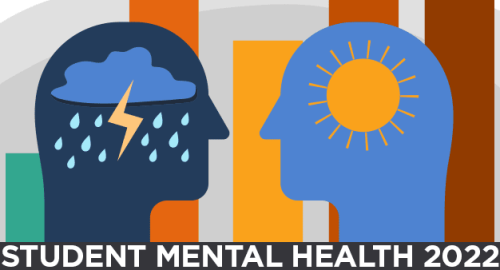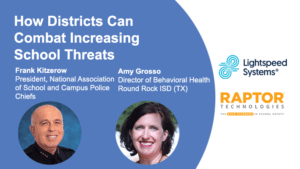Listen to this blog
8 minutes
Summarizing the Available Data
Following the COVID-19 pandemic, growing numbers of students are being diagnosed with mental disorders, and even more report that they are experiencing subjective distress. Now, students, parents, and teachers alike are noticing lasting mental health impacts in 2022, especially with the return to in-person schooling. Keep reading to discover more of the factors and disparities affecting student mental health in 2022.
The Child Mental Health Crisis in 2022
The American Academy of Pediatrics, American Psychological Association, and many more have declared a child mental health crisis in 2022. Parents and educators are no stranger to the ways this mental health crisis has impacted America’s students.
2022 has been an especially trying year to grow up in the United States. In addition to the collective trauma of the COVID-19 pandemic, youth are living through difficult social conditions.
These social conditions, in combination with COVID-19, have created unprecedented stressors for adults and children alike. However, the mental health impact has been especially significant for children, with 55% reporting high levels of depression (compared with 25% of adults).
Children’s Mental Health Statistics
- As many as 1 in 5 children ages 9 to 17, and 1 in 7 ages 2 to 8, have a diagnosable mental health condition.
- Even before the COVID-19 pandemic, diagnoses of depression and anxiety were on the rise in children ages 6-17, increasing from 5.4% in 2003 to 8.4% in 2012.
- From March 2020 to October 2020, mental-health related visits to the emergency room increased by 24% for children ages 5-11 and by 31% for those ages 12-17.
The State of Student Mental Health in 2022
All students have “mental health,” whether or not they experience a diagnosable mental health disorder. The Public Health Informatics Institute, in cooperation with the Centers for Disease Control and Prevention (CDC), defines student “mental health” on a continuum from wellbeing, to distress, to disorder. Students, parents, and teachers alike report greater levels of mental distress, as well as more diagnoses of mental disorders, in America’s youth. Here is what each group has to say about the state of student mental health in 2022.
What Students Say
- Nearly one-third of high school students said they feel unhappy or depressed during the pandemic.
- Almost as many said that they did not feel connected to school adults or to their peers in the school community.
- Returning to in-person learning after COVID-19, teens say they are about as concerned about experiencing mental health challenges as they are about COVID-related health challenges.
What Parents Say
- In a survey of over 1,000 U.S. parents, 20% said their child seems more anxious, 19% said they seem more irritable, and 14% say their child seems sadder during the COVID-19 pandemic.
- Another survey found that 71% of parents believe that COVID-19 took a toll on their child’s mental health and 69% said the COVID-19 pandemic was the worst thing to happen to their child.
What Educators Say
- 89% of educators said student absenteeism was either a minor or major problem for student mental health in their district.
- 41% expected that students’ anxiety about readjusting to in-person learning would have a lot or a tremendous amount of impact on their students’ quality of learning in 2022.
- More than 1 in 10 anticipated that students’ “acting-out behaviors” would be the greatest issue faced by educators in the upcoming school year.
Factors Impacting Student Mental Health in 2022
The COVID-19 pandemic has had a tangible impact on student mental health. Dr. Vera Feuer, associate VP of student mental health at Cohen’s Children’s Medical Center, told NPR that healthcare providers are seeing more students being referred for concerns like aggression, school refusal, depressive symptoms, and suicide risk assessment.
While there is still much we don’t know about the impacts of COVID-19 on student mental health, preliminary research has found that certain factors increase the risk that a student will experience mental distress caused or exacerbated by the pandemic. Some of these factors include:
- Preexisting mental health conditions. According to the Child Mind Institute’s 2021 Children’s Mental Health Report, children struggling with depression prior to the pandemic were more likely to struggle during the pandemic than those who did not.
- Social isolation & remote learning. During the pandemic, the majority of students reported spending four hours or less per day on remote learning. In addition to depriving students of valuable instructional time, this also meant that students spent less time connecting with educators and peers during the school day.
- Grief & loss. Over 140,000 children were estimated to have lost a primary caregiver due to the COVID-19 pandemic — meaning that for every four COVID deaths, one child was left without a caregiver.
- Minority stress. Non-white teens reported greater concerns about returning to school after the pandemic, including worries about academic progress, coping with loss or grief, economic struggles, food insecurity, and mental health challenges.
How Schools Can Improve the Detection & Treatment of Students with Mental Health Conditions
Despite a growing number of students seeking mental health support, only half of all public schools say they are able to effectively provide necessary mental healthcare services in the wake of COVID-19.
So, how can schools rise to meet the growing mental health needs of students post-pandemic? There are two primary steps school districts can take to better meet the mental health needs of their students:
- Monitor school data at the district level. The Public Health Informatics Institute recommends that districts use school attendance and disciplinary data to measure overall public health trends and identify students in need of early intervention.
- Digitally document low-level mental health concerns at the individual level. Educators are often the first to notice warning signs of mental health issues in their students. By digitally documenting and sharing these low-level concerns with other school staff, students and parents can be connected with appropriate mental health resources, reducing the likelihood that an at-risk child will harm themselves or others.
Related Resources
Guide to K-12 Student Wellbeing
Strategies to Recognize, Document, and Support Students in Distress
Download now

Listen to this blog
8 minutes
Learn more
Featured video
Recent Webinar
How Districts Can Combat Increasing School Threats
Districts are facing an unprecedented number of students struggling with...
Watch now






